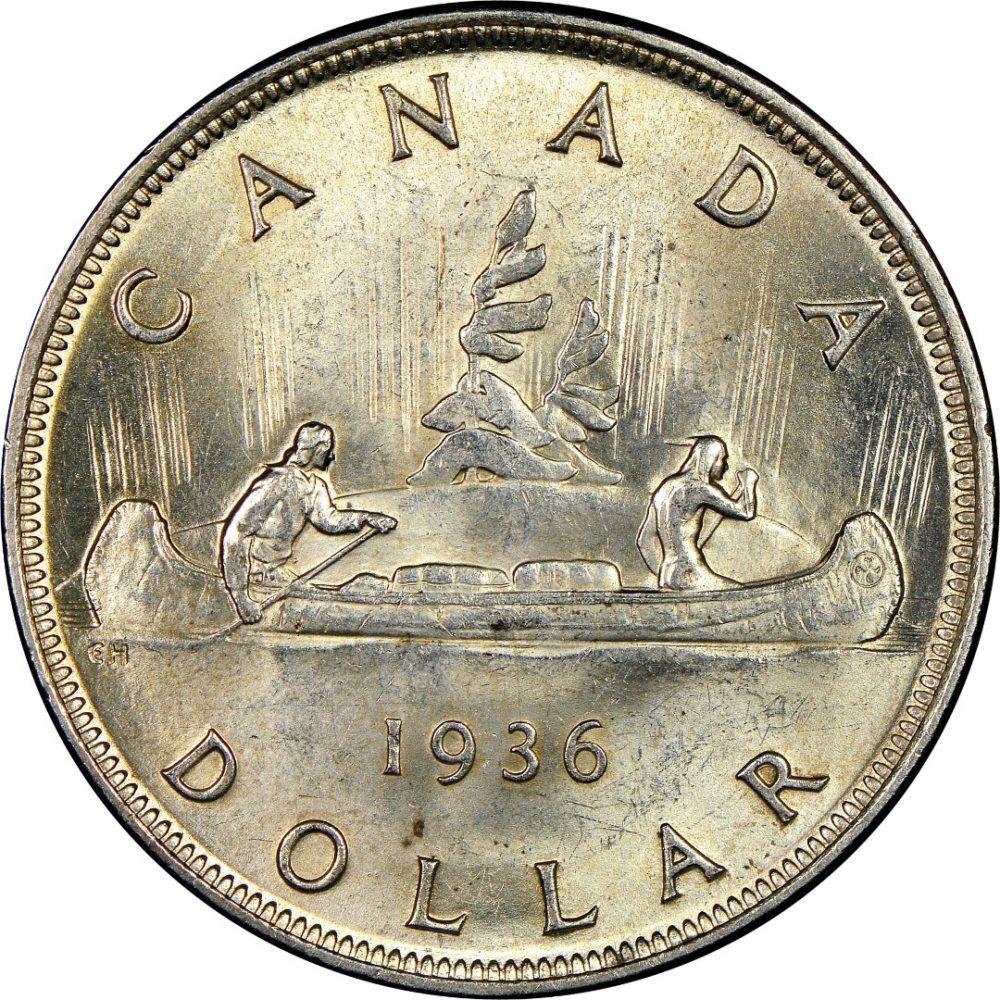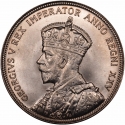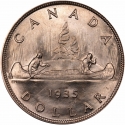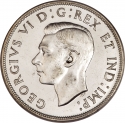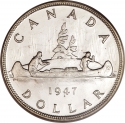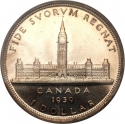You are about to finish your registration. Please check your mailbox (including spam folder). There should be a letter with a confirmation link. Check setting to make sure that your e-mail address is correct.
Send letter againDescription
The Voyageur Dollar was a coin of Canada struck for circulation from 1935 through 1986. Until 1968, the coin was composed of 80% silver. A smaller, nickel version for general circulation was struck from 1968 through 1986. In 1987, the coin was replaced by the loonie.
Obverse

|
Crowned and robed bust of George V facing left; below bust in small lettering the artist's initials B.M. GEORGIVS V DEI GRA: REX ET IND:IMP: |
|---|---|
Reverse

|
Depicts a canoe containing a voyageur, or unlicensed fur trader, and an Indigenous man (aboriginal). The canoe also contains two bundles of furs—on one, the initials HB, for Hudson's Bay Company may be seen. CANADA |
| Edge |

